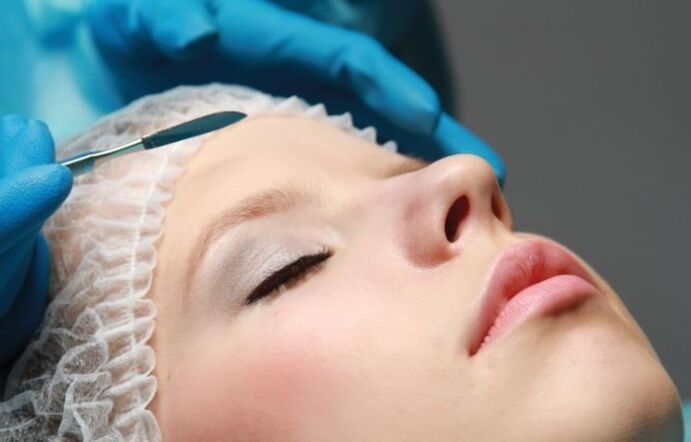Nose tip rhinoplasty is often requested correction.This is the central part of the face and all geometry and the perception of appearance depends on it.Nature has endowed each person with different external data.The ends of the nose are also different: they come from thin, narrow and wide to the bulky and lowered.And often it happens that the nasal structure does not satisfy the owner.This is where plastic reaches the rescue.What are the options to correct the disability?
What is rhinoplasty on the tip of the nose?

Nose tip rhinoplasty is a surgical method of correction of this area, the most popular rhinoplasty operation.There are several common factors that can create a rounded tip from the nose (or nose with potatoes).
- Patients with thicker nose skin usually find a more rounded tip.In this case you can remove excess fabric.
- The second reason is the cartilage itself.The lower and lateral cartilage can be very wide or convex.
The operation adjusts the tip of the nose:
- Rounded - Reduce;
- LIFTED - LIFT;
- Curved - straightened;
- Largo - Strait.
The lowered tip is corrected by removing the fabric from the cartilage.But plastic surgeons perform other types of correction.This is the elimination of asymmetry and the sagging of Columella (a skin partition that separates nasal passages) and others.This plastic is among the most difficult.The complexity of surgical intervention is caused by a characteristic of each manipulation.After all, the structure and shape of the cartilage in a particular patient are peculiar.After an unsuccessful operation, the patient risks obtaining a distorted and deformed tip or his entire nose.Therefore, it is worth trusting the surgeon with experience: it will definitely plan the operation individually.To do this, you need to study the best rhinoplasty experts in the city.
Who is not shown rhinoplasty?
Plastic surgeon customers who have certain against -indications are found to go to the clinic to convert nasal tip:
- cancer diseases;
- Signs of infections;
- the presence of diabetes mellitus;
- acute and chronic diseases;
- Autoimmune disorders;
- Insufficient blood coagulation;
- Inflammation in nasal space.
Pregnant manipulation is shown after the successful appearance of newborns.
Correction methods
Today, in medical and cosmetological clinics, the modeling method using computer equipment is used more often.Therefore, the patient before the operation sees in the photo a face with a new tip.The plastic procedure to transform nasal configuration is performed into two open or closed ways.With open rhinoplastics, the doctor first cuts the jumping area and subsequently releases the porcol cartilage with an additional removal of excessive tissues.
In the end, the seams are applied.If you need to increase or strengthen the tip, use the rack cartilage.The doctor, using this technology, controls the operational process.This helps the surgeon avoid possible supervision and calculation errors.With a closed procedure, the doctor cuts the nasal mucosa, releases the wing cartilage and places the seams, creating the desired shape.But this method does not provide the spacious doctor's actions, such as the use of an open procedure, as the plastic doctor is limited in the use of technology.
In this case, the surgeon is difficult to track possible damage to the vessels.Due to what the patient is in danger of obtaining bruises and prolonging rehabilitation.The closed rhinoplasty leaves a small 4-5 mm seam in the nose threshold area.What method of performing the procedure to appeal, the doctor decides.

Performing the operation
The surgeon performs the upper nose adjustment using general or local anesthesia.The duration of the procedure does not exceed 1-2 hours (in rare cases 3).In the operational period, the surgeon invades soft and cartilage, Columella.The procedure is performed taking into account the anatomical characteristics of the client.The device, the fortress, the shape, the thickness of the cartilaginous tissues of the nose and other qualitative differences are taken into consideration.Exfoliate the soft tissues of the doctor from bone structures and nasal space in order to gradually perform the measures to change the structure.At the same time, the surgeon adheres to the rule "Don't hurt!"So that the patient's appearance does not suffer.
Due to the excess of cartilage and other tissues that support the top, it is possible to lose nose support functions.And this leads to overheating, a violation of natural appearance.But even if the nose, after an operation, accompanied by excessive tissues, did not lose their individuality, the patient risks obtaining unsatisfactory healing.Therefore, the purpose of the surgeon is not to violate the nose's support properties.In fact, rhinoplasty only the tip is required with little frequency.
Correction of one of the nasal anatomy zones may affect other areas.
Varieties of the procedure
The use of plastic manipulations is allowed to make these adjustments:
- Reducing the tip of the nose is achieved by a decrease in origin structures.The correction is performed by measures: shortening of the side legs, vulnus lateral and median cartilage legs, gum cabin, cutting or softening of the median cartilage legs.The methodology of reducing the ends of the nasal elite with a stretch of external movements.To prevent this from happening, the surgeon performs the resection of the wing rod to restrict the nostrin.
- The increase (stretching) of the nasal tip is associated with the concept of "ideal projection".It is determined by the location of the tip above the rear line, which gives a spicy kerma.To achieve this result, you will need to combine the median legs with the lower side cartilage and restrict the flat dome of the end of the tip cartilage.It turns out that stretching occurs using cartilage biotransplantation and leads to the force of the tip.Fabric transplantation is allowed to use at the tip in the domes area.
- Reducing the width (narrowing) from the top of the nose.Excessive width is formed by the volumetric cartilage of the nasal side lips, placement and contours.A similar failure is eliminated by connecting the legs of the lower side cartilage and the regeneration of the cartilage biotransplantation.A reduced nasal tip seems punctual.According to the revisions of those who underwent this procedure, each has received elegant changes on their face.
- The tip reduction is indicated in case of excessive tilt down/up.The failure is adjusted by connecting the median legs of the lower side cartilage, with greater fixation of them with a jumper in the chosen position.
For plastic to end effectively, you must trust the surgeon's experience and skill.
Recommendations before the operation
Preparation for manipulation is important for the doctor and the patient.The plastic doctor examines the client to evaluate the health status and identify possible against -indications.The client 7 days before rhinoplasty refuses tobacco and alcohol, the drugs that affect blood clotting.He also passes the analysis before the procedure:
- General - Blood, Urine;
- Biochemistry - Blood;
- in hepatitis and HIV;
- in Protrombina;
- in antigen.
The results of the X -ray, computed tomography of the perinosa, fluorography, ECG, will also be needed.If a plastic surgeon neglects any step in the preparatory period for an operation, it is preferable to refuse services.
8 Proper rehabilitation rules
Recovery after surgery occurs mainly without complications:

- Drink and eat is allowed after 3-5 hours at the end of the procedure.Limit in drinking water - up to 2 l/day.Consumption is neither heavy food, neither hot nor cold, except for the very salt menu and acute food.
- The first 2 days on the face are visible swelling and bruises, the patient feels slight painful manifestations.
- Do not express swelling after plasticity usually remains up to one month.However, it does not interfere with breathing.
- The customer should forget for several days about the appearance under the sun, physical classes.
- Smoking is not allowed, drinking alcohol and coffee.
- It is forbidden to remain in spaces where it is cold or hot.
- For taboos and activity that increases blood pressure.
- Will accelerate complete hygiene rehabilitation and recommendation letters.
Complications (possible) after rhinoplasty
Such an operation is difficult and jewelry in the surgeon's work.And the risk of patient circulation for repeated rhinoplasty is not excluded.Among the probable negative manifestations:
- the divergence of the edges at the cut place;
- Writing cartilage fabric;
- Penetration of infection and bleeding.
The occurrence of the unsatisfactory result of nose rhinoplasty is due to the fact that excessive removal of cartilage tissue.After that, the tip rises strongly, like a pork patch or, inversely, lowers.
You can correct these incidents with repeated events only.The newly related procedures are performed to restore backup and the basic structures that support the tip of the nose.But you can pass repeatedly no more than 3 times.The cartilage on both sides should be removed in exact proportion, which will avoid asymmetry.Repeated rhinoplasty is possible no less than 4 months after previous manipulation.
Price
The price of the event kept at the tip of the nose can differ in different cities.The cost of the clinic in the ranking is also reflected.And it is guaranteed by all professionalism and the experience of surgeons and the level of service in a medical institution.Do not take risks if the clinic receives lower prices than competitors.This operation cannot be evaluated very cheap.




















